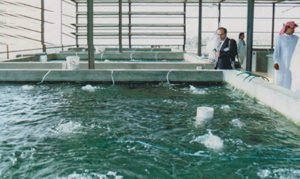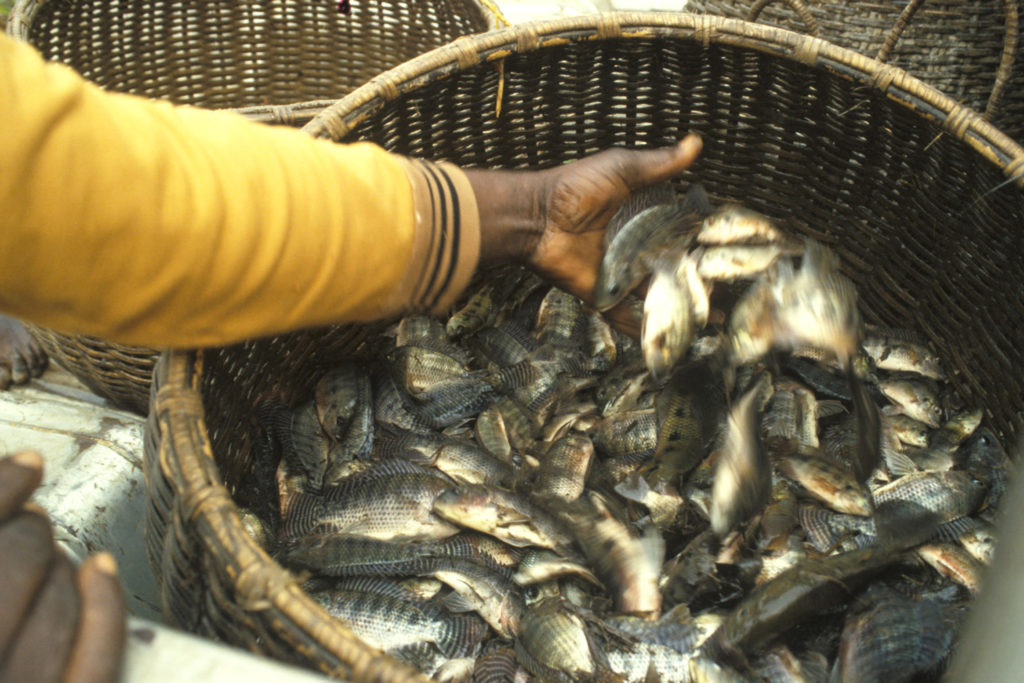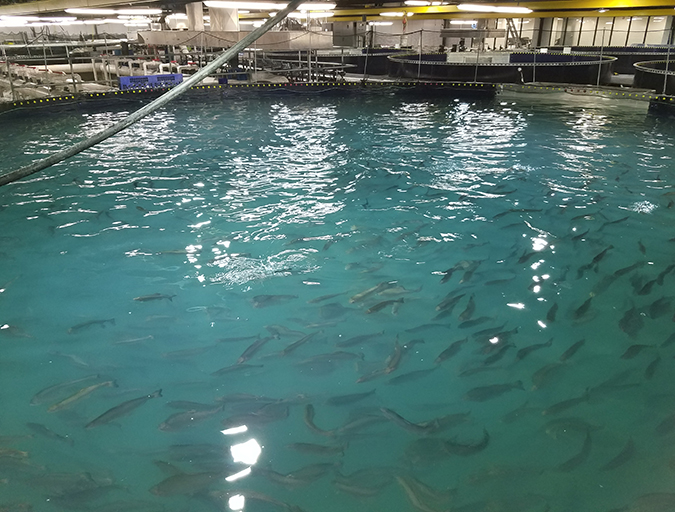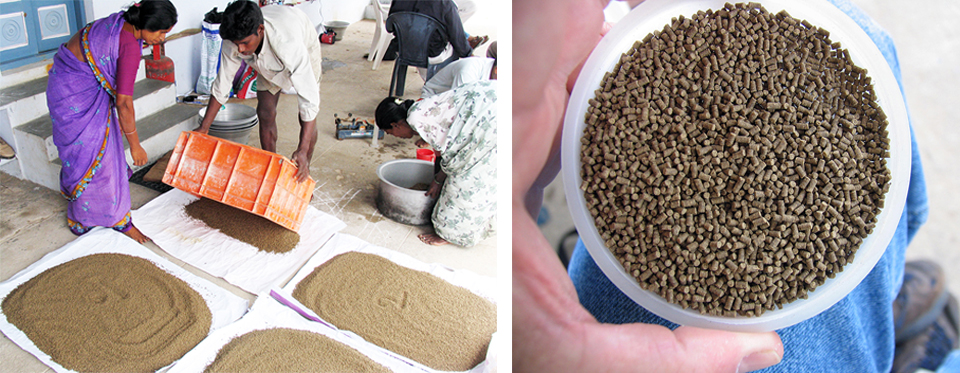Egypt accounts for 90% of regional production

Tilapia are freshwater fish adapted to a wide range of water salinity and temperature, which makes them excellent candidates for aquaculture in the Arabian region. However, tilapia culture is practiced in only a few countries of the region: Egypt, Saudi Arabia, Syria, Sudan, and Jordan (Table 1).
Nile tilapia and blue tilapia are the primary species raised, with additional focus on Galilee tilapia, Mozambique tilapia, redbelly tilapia, and some hybrids.
Egypt alone produces about 90 percent of the farmed tilapia in the region, followed by Saudi Arabia. The three other countries mentioned above apply simple, extensive and semi-intensive culture methods, using fertilizers and farm-made supplemental feeds as feed inputs, which results in relatively low production.
Tilapia in Egypt
Tilapia is the most important cultured fish species in Egypt. Its production increased from 21,505 metric tons (MT) in 1992 to 52,755 MT in 1998. These figures represent 37.9 percent of total aquaculture production in Egypt and 5.42 percent of the world’s production. Egypt is the fourth-largest producer of farmed tilapia in the world, only surpassed by China, the Philippines, and Indonesia.
El-Sayed, Production of farmed tilapia, Table 1
| 1992 | 1993 | 1994 | 1995 | 1996 | 1997 | 1998 | |
|---|---|---|---|---|---|---|---|
| Egypt | 21,505 | 19,857 | 25,214 | 21,969 | 27,854 | 30,416 | 52,755 |
| Saudi Arabia | 2,191 | 2,305 | 2,220 | 2,495 | 2,614 | 3,837 | 3,315 |
| Syria | 1,126 | 1,015 | 991 | 1,110 | 1,588 | 1,100 | 1,372 |
| Sudan | 200 | 200 | 200 | 1,000 | 1,000 | 1,000 | 1,000 |
| Jordan | 16 | 45 | 67 | 128 | 135 | 150 | 263 |
| Total | 25,038 | 23,422 | 28,692 | 26,702 | 33,191 | 36,701 | 58,705 |
Polyculture systems
More than 100,000 ha of inland freshwater and brackish water are currently used for aquaculture in the Nile Delta region and the Northern Delta lakes of Egypt. Tilapia culture is practiced mainly in semi-intensive, polyculture systems where tilapia, carps, and mullets are farmed together.
Farmers stimulate natural food production through pond fertilization with organic and/or inorganic fertilizers, in addition to supplementation of feed ingredients (wheat bran and rice bran) or low-protein, high-energy feeds. Tilapia culture in rice fields is also growing at a significant rate, due to the expansion of rice agriculture in Egypt.
Intensive culture in private sector
Intensive tilapia culture in floating cages, concrete tanks, and earthen ponds is currently expanding significantly, and gaining great attention – especially in the private sector. Since high-quality pelleted feeds are used for intensive tilapia culture, a number of private and governmental aquaculture feed mills have been built in recent years to meet the increased demand for fish feed.
Tilapia in Saudi Arabia
Tilapia is also the most important cultured fish in Saudi Arabia. About 10 strains of pure and hybrid tilapia have been tried in culture, but Nile tilapia is the most popular species. Because of the scarcity of water in Saudi Arabia, production systems are intensive and super-intensive, mainly in concrete and fiberglass tanks that use underground water in recirculating or flow-through systems. Modern technology and management, and highquality feeds are usually used. Tilapia culture in Saudi Arabia is practiced almost exclusively by the private sector. However, the government provides substantial assistance to the aquaculture sector through loans, extension services, technical assistance, and continuous research. As a result, the number of tilapia farms has tripled since 1990.
Conclusion
Egypt and Saudi Arabia are the major tilapia producers in the Arabian region, with the former accounting for 90 percent of current production. Most production in Egypt is semi-intensive, but intensive systems are becoming more important. In Saudi Arabia, the industry is essentially intensive and heavily supported by the government.
(Editor’s Note: This article was originally published in the December 2001 print edition of the Global Aquaculture Advocate.)
Now that you've reached the end of the article ...
… please consider supporting GSA’s mission to advance responsible seafood practices through education, advocacy and third-party assurances. The Advocate aims to document the evolution of responsible seafood practices and share the expansive knowledge of our vast network of contributors.
By becoming a Global Seafood Alliance member, you’re ensuring that all of the pre-competitive work we do through member benefits, resources and events can continue. Individual membership costs just $50 a year.
Not a GSA member? Join us.
Author
-
Abdel-Fattah M. El-Sayed, Ph.D.
Animal Production Department
Faculty of Agricultural Sciences
United Arab Emirates University
Al Ain, United Arab Emirates[101,97,46,99,97,46,117,101,97,117,64,100,101,121,97,115,108,101,46,97]
Tagged With
Related Posts

Health & Welfare
10 paths to low productivity and profitability with tilapia in sub-Saharan Africa
Tilapia culture in sub-Saharan Africa suffers from low productivity and profitability. A comprehensive management approach is needed to address the root causes.

Responsibility
A helping hand to lend: UK aquaculture seeks to broaden its horizons
Aquaculture is an essential contributor to the world food security challenge, and every stakeholder has a role to play in the sector’s evolution, delegates were told at the recent Aquaculture’s Global Outlook: Embracing Internationality seminar in Edinburgh, Scotland.

Intelligence
A land grab for salmon (and shrimp) in upstate New York
The operators of Hudson Valley Fish Farm see their inland locale as a pilot to prove that land-based fish farming, located in close proximity to major metropolitan markets, can be successful.

Aquafeeds
A look at India’s fish feed industry
India's fish-farming industry makes limited use of modern feeds, providing potential for the feed sector to grow. Commercial feeds are predominantly used for pangasius farming, followed by a rising popularity in carp culture.


